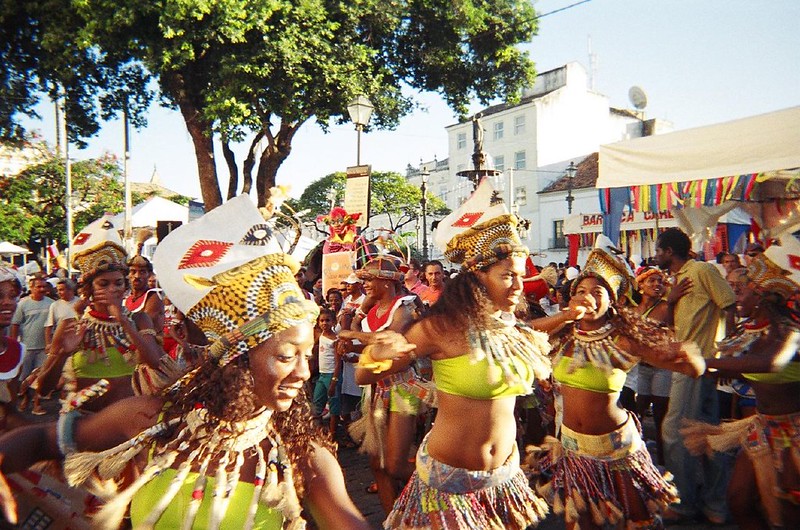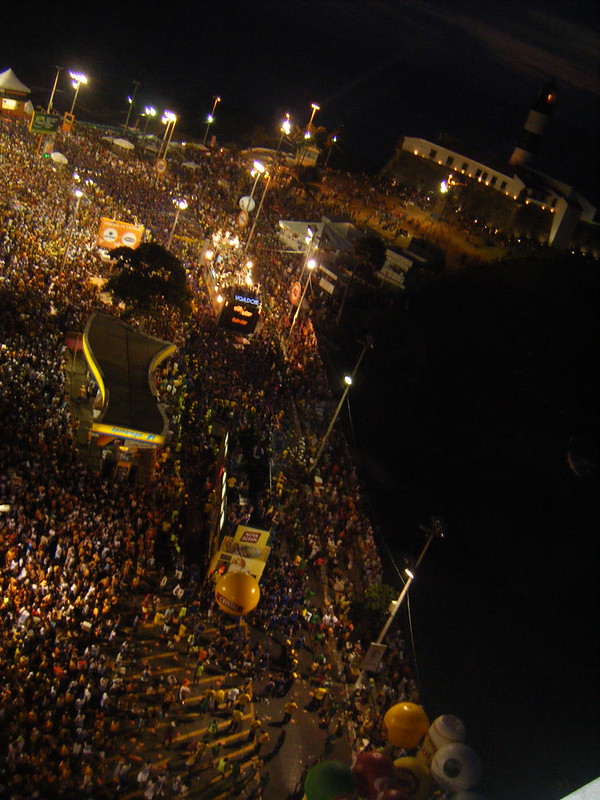Salvador Carnival
The World's Largest Street Festival Pulsing with Bahia's Heartbeat
2026/02/11 - 2026/02/17
Every February, Salvador, the capital of Bahia state in Brazil, comes alive for a week-long, electrifying Carnival that transforms the entire city. Known as the “world’s largest street party,” Salvador Carnival draws over two million people who fill the colonial streets and Atlantic boulevards, dancing, singing, and joining the parades. The rhythm of axé music, the mouthwatering aroma of frying acarajé, and the sun-warmed cobblestones underfoot make this festival a full sensory experience.
The main stage is the famous Barra-Ondina route, but events take place all over Salvador, welcoming everyone from local families to international travelers and music lovers. If you want to feel the true soul of Brazil—a fusion of African, Indigenous, and Portuguese traditions found nowhere else—Salvador Carnival is unmissable.
Main Attractions
Trio Elétrico Parades
The symbol of Salvador Carnival is the trio elétrico—a massive sound truck carrying live bands and singers. These trucks move slowly along the city’s main routes, followed by a sea of dancing revelers known as “pipoca” (popcorn). Axé, samba-reggae, and pop music blast at full volume, vibrating through your whole body as you dance in a swirl of confetti and colored powder.
Blocos & Camarotes
If you want to join the parade up close, buy an “abadá” (special T-shirt) to enter a bloco. From the camarotes (VIP stands), you can enjoy open bars, gourmet food, and a panoramic view of the parade. Both are filled with energy, laughter, and the scents of tropical cocktails and sunscreen.
Costumes and Decorations
Costumes range from simple T-shirts and shorts to elaborate outfits inspired by Orixás (Afro-Brazilian deities), folklore, or pop culture. Beaded necklaces, face paint, and flower crowns are popular. The city is decorated in Bahia’s colors (yellow, green, blue, white), with banners and balloons reflecting sunlight off sequins and metallic fabrics. The sweat, glitter, and occasional splash of water are all part of the Salvador Carnival experience.
Traditional Food & Drink
Street food is a must: acarajé (black-eyed pea fritters with shrimp), moqueca (seafood stew), grilled cheese skewers, and coconut cocada are favorites. Icy caipirinhas, beer, and coconut water are everywhere, and the aromas of dendê oil, grilled meats, and tropical fruits blend with the sea breeze.
Cultural and Historical Background
The history of Salvador Carnival begins with “Entrudo,” a pre-Lenten festival brought by the Portuguese in the 16th century. Entrudo was a raucous celebration involving water, perfume, and flour fights, and was wildly popular in colonial Salvador. Over time, rituals, music, dance, and costumes brought by enslaved Africans blended with Indigenous traditions, creating Bahia’s unique multicultural Carnival.
From the late 19th to early 20th century, Salvador Carnival grew larger, with parades, costumes, and marching bands becoming the norm. In 1950, local musicians Dodô and Osmar invented the trio elétrico (sound truck), which became the Carnival’s iconic symbol. With the trio elétrico, music and dance could move through the city, turning Carnival into a “moving music festival” and the world’s largest street party.
Today, Salvador Carnival is a proud celebration of Afro-Brazilian heritage and identity. Afro blocos like Olodum and Ilê Aiyê, with their powerful drums and vocals, have become global symbols of Bahia’s culture. Carnival is a time when all social and racial barriers dissolve, and everyone unites in celebration, honoring ancestors, community bonds, and self-expression—it is an irreplaceable part of life for the people of Salvador.
Participant Voices
I came from France just for Carnival. I bought an abadá and joined a bloco with friends. The music was so loud it shook my bones, and everyone was incredibly friendly. I tried acarajé for the first time—spicy but absolutely delicious!
Fun Facts
- Salvador Carnival holds the Guinness World Record as the world’s largest street party, with over 2 million participants each day.
- The trio elétrico was invented in Salvador in 1950 by musicians Dodô and Osmar.
- The parade routes stretch over 25 kilometers in total.
- Some blocos, like Olodum, are internationally famous and have performed with Michael Jackson and Paul Simon.
Festival Dates
Salvador Carnival is held every February or March throughout the city of Salvador, Bahia, Brazil.
The event schedule is subject to change. Please check the official website for the most up-to-date information.
Information
| Name | Salvador Carnival |
| Country | Brazil |
| Area | Salvador da Bahia |
| Date | 2026/02/11 - 2026/02/17 |
| Link |
Upcoming Festivals
Dia de la Virgen de Guadalupe Mexico
A Festival Weaving Faith, Fervor, and Mexican Identity
2025/12/11L'Escalade Switzerland
Geneva’s Grand Winter Festival of Courage, Chocolate, and Community
2025/12/12Umkhosi Wokweshwama South Africa
The Zulu First Fruits Festival—A Sacred Celebration of Land, Ancestors, and Renewal
2025/12/12Lucia Festival (St. Lucia's Day) Sweden
A Festival of Light Illuminating the Nordic Darkness
2025/12/15Las Posadas Mexico
The Luminous Quest for Sacred Shelter
2025/12/22Noche de Rabanos (Night of the Radishes) Mexico
A celebration blending art, farming heritage, and cultural traditions
2025/12/23Chant of the Sybil on Majorca Spain
A Medieval Prophecy Echoes Through Majorcan Christmas
2025/12/23‘Hatajo de Negritos’ and the ‘Hatajo de Pallitas’ Peru
A Christmas Festival of Rhythm, Faith, and Afro-Andean Heritage in Peru’s Ica Region
2025/12/24Harbin International Ice and Snow Sculpture Festival China
A Frozen Wonderland Where Art and Adventure Merge
2025/12/24Takanakuy Peru
The Andean Festival of Reconciliation by Fist—How Confrontation Creates Year-End Peace and Bonds

